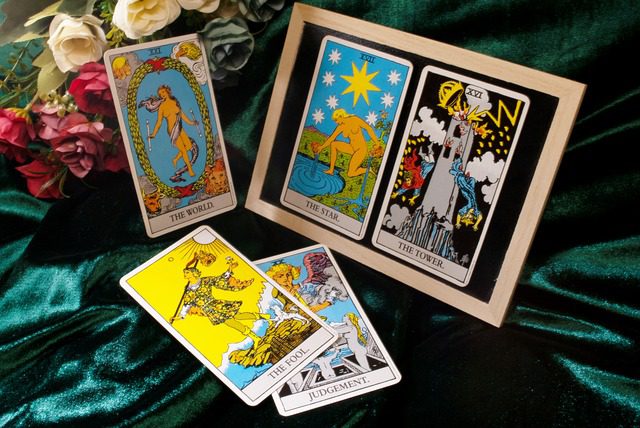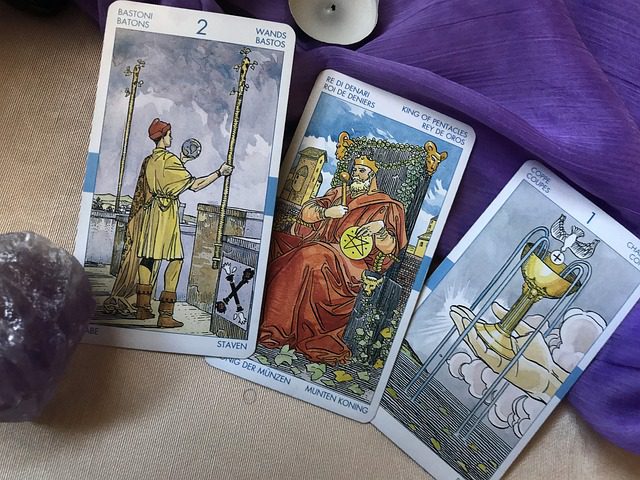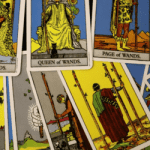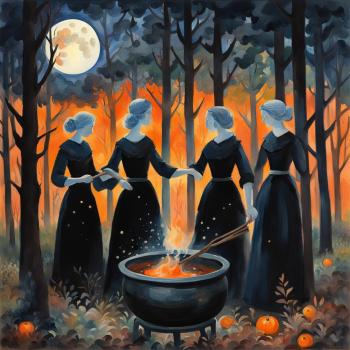Doing a deep dive into several structural elements of established tarot spreads can be helpful as you begin to create your own spreads. Several of you who are Intuitive Readers likely already perform some version of this process. If so, please do share some of your own tips in the comments. As you begin to craft spreads that are unique to your divination style, here are some questions to consider.

What is the Purpose of the Spread?
What kind of questions will the spread be designed for? Will the layout be specific to a particular type of question, such as career or yes/no questions? Will the spread be used for general questions? Or perhaps the spread will be used to gain clarity about a Seeker’s personality. Spend some time thinking about what might be motivating you to create a wholly unique spread, and keep a record of the insights that bubble up.
What are the Philosophical or Theoretical Principles?
Will your layout be astrology-based? Oriented toward the philosophies of Buddhism? Will Kabbalah or some other belief system provide some of the structural support for your spread? Might the spread be specific to a particular deck? You might feel inspired to create a spread that reflects or relates to the qualities of a particular deity, or you might be moved to create a spread that is reflective of the land spirits around you. Consider whether you want to combine different cards from different decks, and make some notes about how you chose each card. Review what you’ve written and jot down any overarching themes that might have revealed themselves.
How Will You Design the Layout?
How will the layout relate to the underlying principle(s)? As an example: the Celtic Cross is based on Western Judeo-Christian principles; thus, the layout resembles a cross. Will principles of numerology come into play? How will that be reflected in the spread design? Another example might be designing a layout that resembles a three-way crossroads if you’ve decided to create a spread reflective of Hekate, or a layout that resembles a stylized heart if you’re crafting a spread reflective of Aphrodite.
How Many Cards?
Consider the significance of the number of cards you decide to use. Do some research of number meanings in numerology and in different belief systems. Take, for instance, the number 5. We have 5 senses. We have 5 fingers and toes. In Sikhism there are 5 sacred symbols, and according to Hinduism there are 5 elements that make up the universe. There are the 5 pillars of Islam, and the 5 wounds of Christ in Christianity. In numerology, 5 is associated with the planet Mercury. Finally, in the Major Arcana 5 is the Hierophant. Fives in the Minor Arcana represent a midpoint in the seeker’s journey.
As you research number meanings when you’re considering the cards you’ll use in the spread you’re creating, remember that using more cards doesn’t necessarily mean a better reading. Think about whether your new system will have a limit as to how many clarification cards you’ll draw, or if that decision will be made in the moment during the reading.
What Will the Card Positions Mean?
Each card position is an aspect of the Querent’s issue (think of the 3-card draw). In your unique spread, what will each card in each specific position mean? Why? For example, if you design a three-way crossroads as a Hekate-specific spread that looks like some version of a capital T, what might each of the “roads” leading to the crossroads represent? What might the card at the center of the crossroads mean? Will the cards be laid out starting at the furthest points of each “road” and continue to be drawn until the “roads” meet to form a crossroads? Will each “road” have the same number of cards?

Final Thoughts
You’ll want to be very, very familiar with your deck before you start to create your own spreads, and you might find it helpful to keep a sort of Tarot BOS (Book of Spreads) as you begin this work. Write down how you made your decisions (and what they are), and draw simple pictures of your potential layouts to keep track of the spread’s evolution. If they’re part of your practice you may want to include plant and/or crystal correspondences in your Tarot BOS. You might also want to have a section to record the feedback you get as you start to test-run your newly-devised spread, and use that feedback for further refinement of your spread if necessary.

















